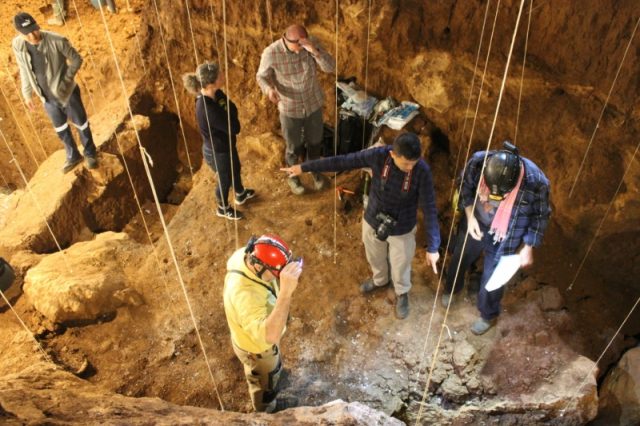
A Filipino archeologist was part of an international team of researchers who made a “groundbreaking” discovery on the arrival of early humans in Southeast Asia.
Most fossils and other pieces of evidence gathered about the early Homo sapiens in the region were traced back 60,000 years ago.
A team of scientists, however, found evidence that suggested the presence of humans earlier than this, that is, as far back as 86,000 years.
The new findings were found in the Tam Pà Ling cave in Northern Laos.
Vito Hernandez, an archeologist who graduated from the University of the Philippines-Diliman (UPD), was part of this team of scientists.
UPD-College of Science shared the news of Hernandez’s feat on its Facebook account on June 29.
The post has since garnered 10,000 reactions and 2,100 shares on the platform.
According to UPD-CS, Hernandez earned his undergraduate and master’s degrees in UP’s Archeology program.
He also taught undergraduate classes there.
In line with the recent proof of early humans, Hernandez said that the findings in his group’s study tell a new understanding of human migration thousands of years ago.
“This discovery is helping us better understand the distribution of our direct ancestors at a time when we know other populations of humans, now extinct, existed,” he said in a statement.
The Filipino scientist hoped that he could help contribute to applying science in serving society.
“I hope to return after my research work in Australia and contribute to making our science serve Philippine society,” he said.
The new study about human origins was published in a peer-reviewed journal magazine Nature Communications.
The digital copy of it can be accessed through Nature’s website here Early presence of Homo sapiens in Southeast Asia by 86–68 kyr at Tam Pà Ling, Northern Laos | Nature Communications.
Further details about the Laos fossils
Hernandez explained that analysis of the locations where they found the fossils showed the route human ancestors traveled as they moved eastward to Australia.
Aside from this cave, previous evidence was gathered at the Tam Ngu Hao 2 (“Cobra Cave”) on the same mountain about the presence of humans known as Denisovans.
In the study, the now-extinct Denisovans were said to have lived between 164,000 and 131,000 years ago.
“This proves that our human ancestors also traveled along forests and river valleys apart from following islands and coastlines as they moved eastward to Australia, where they are controversially thought to have migrated as early as 65,000 years ago,” Hernandez said.
“Analyses of the fossils in Tam Pà Ling suggest that these early modern humans were part of an immigrant population, but whether their genetic line successfully survives in current populations is yet to be determined,” he added.
Hernandez also shared that the team applied their techniques to date the sentiments and fossils they found at Tam Pà Ling.
He noted on the importance of the collaboration of earth and human science experts in dating or tracing the fossils and sediments and in preserving them.
“The dating and the quality of fossil preservation is important as we’ve seen from research led by scientists like Professor Armand Mijares at the UP School of Archaeology,” Hernandez said.
“But as we’ve also seen from our research and other human evolutionary research like in Denisova cave in Russia, a very close collaboration between the Earth and Human sciences is necessary if we are to achieve a more complete picture of how humans evolved and settled into different parts of the world,” he added.




